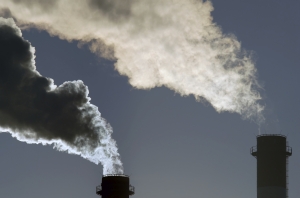RepuTex has today published its full submission (open link) to the Department of Climate Change, Energy, the Environment and Water (DCCEEW) on proposed amendments to the strengthen the operation of the Safeguard Mechanism.
The decision to implement an “industry average” or “site-specific” framework will have notable implications for market development, beyond simply determining ‘how the emissions reduction obligation will be distributed’ between high emitting facilities.
While either scheme may be adapted to meet Australia’s 2030 emissions target, in practice, there are some drawbacks when applying an industry-average intensity framework at the facility level.
Namely, such a scheme could be at heightened risk of undermining the environmental integrity of Australia’s 2030 emissions reduction target. This is because automatic crediting below an industry average baseline (after existing headroom is removed from the scheme) would result in the issuance of credits for non-additional abatement, given facilities would be rewarded with credits despite having undertaken no action to improve their performance.
While some of these risks may be mitigated by complementary settings, such as an accelerated decline in baselines, recommended steps to strengthen the integrity of crediting under an industry average scheme would take time to “flush out” grey carbon units from the market.
How many years this takes to occur may be of practical concern to the interim effectiveness of the scheme’s contribution to Australia’s 2030 target, and could require a prohibitively stronger rate of decline from 2025-26 to ‘catch up’ lost abatement (during the transition period) within a shorter amount of time prior to 2030.
Steps taken to expedite the integrity of crediting under an “industry average” scheme (e.g., via an accelerated decline rate) would, in practice, seek to align an industry-average intensity scheme to where a site-specific scheme would commence from in its first year (2023-24).
We therefore believe that a site-specific framework (calculated using a two- or three-year average emissions intensity) may be a more simple, transparent, and effective way to align the Safeguard Mechanism with Australia’s 2030 target, and longer-term emissions reduction commitments.
This approach is consistent with recommendations made by the King Review and DCCEEW (formerly the Department of Industry) under the former Safeguard Crediting Mechanism consultation (August 2021), and previous timetables proposed to implement site-specific crediting reference levels.
While it is sometimes suggested that the implementation of facility-level emissions baselines could penalise ‘cleaner’ facilities (because all facilities would be required to contribute emissions reductions, rather than only more intensive facilities), in practice, in the heavy industry sector, facilities with below-average intensity are not “clean” – and are still among Australia’s highest emitting facilities in absolute terms.
By definition, all covered facilities are “high emitting” by virtue of their inclusion within the Safeguard scheme. A strong argument can therefore be made for all covered facilities to contribute towards Australia’s 2030 and 2050 emissions targets, consistent with current voluntary commitments.
In this submission, we consider the key policy settings required to develop a credible, scalable market under the Safeguard Mechanism, and identify potential risks for policymakers, along with recommendations to expedite scheme integrity.















